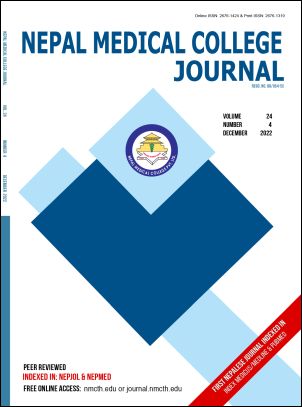The Usefulness of Perfusion Index Derived from a Pulse Oximeter in Predicting Hypotension following Spinal Anesthesia for Cesarean Section
DOI:
https://doi.org/10.3126/nmcj.v24i4.50579Keywords:
Perfusion index, pulse oximeter, hypotension, spinal anesthesia, cesarean sectionAbstract
Hypotension is a frequent complication of spinal anesthesia. Decrease in peripheral vascular tone that occurs during pregnancy is one of the factors causing hypotension in patients undergoing cesarean section under spinal anesthesia. Perfusion index derived from pulse oximeter can be an easy and non-invasive measure of peripheral perfusion. This study was conducted to test the usefulness of pulse oximeter in predicting hypotension following spinal anesthesia for cesarean section. In this study, 247 parturients undergoing elective cesarean section under spinal anesthesia were included. Parturients who had baseline PI<3.5 were kept in Group I and parturients who had baseline PI>3.5 were kept in Group II. All the patients were given 0.5% bupivacaine heavy 2.2 ml for spinal anesthesia. In group I, 30 patients (23.62%) had hypotension whereas in Group II, 119 patients (100%) had hypotension. The episodes of hypotension were significantly lower in Group I as compared to Group II (p<0.001). The dose of mephentermine (p<0.001) used was also significantly lower in Group I as compared to Group II. Therefore, we concluded that a baseline PI>3.5 is a prediction of hypotension following spinal anesthesia in patients undergoing cesarean section.
Downloads
Downloads
Published
How to Cite
Issue
Section
License
Copyright (c) 2022 Nepal Medical College Journal

This work is licensed under a Creative Commons Attribution 4.0 International License.
This license enables reusers to distribute, remix, adapt, and build upon the material in any medium or format, so long as attribution is given to the creator. The license allows for commercial use.




